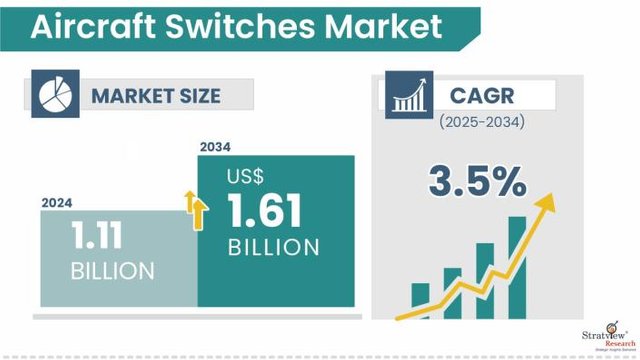Aircraft Switches Market: A Critical Link in Modern Avionics
Aircraft switches, though small, play an essential role in modern avionics systems. From toggles and push-buttons to rotary and rocker switches, these components facilitate safe and seamless control across cockpit, cabin, and systems infrastructure.
According to Stratview Research, the aircraft switches market was estimated at USD 1.11 billion in 2024 and is likely to grow at a CAGR of 3.5% during 2025-2034 to reach USD 1.61 billion in 2034.
Download the Sample Report here:
https://stratviewresearch.com/Request-Sample/4104/aircraft-switches-market.html#form
• Increasing aircraft production and backlog, especially for narrow-body jets
• Growing adoption of electronic flight instrument systems (EFIS)
• Rising demand for pilot-centric cockpits and intuitive HMI systems
• Technological advancements in tactile and illuminated switches for improved usability
Challenges:
• High certification and reliability requirements from aviation regulators
• Limited innovation in switch technology compared to other avionics
• Supply chain disruptions impacting component availability
• Competitive pricing pressure from low-cost manufacturers
Opportunities:
• Integration of smart and programmable switches for next-gen cockpits
• Growth in eVTOL and urban air mobility (UAM), requiring compact, high-reliability switches
• Demand for lightweight, sealed switches for harsh environments
• Expanding retrofit market for older aircraft requiring panel upgrades
Trends:
• Use of backlit and multi-function switches for ergonomic advantages
• Integration with CAN bus and ARINC protocols for system compatibility
• Customization based on aircraft type (civil, military, eVTOL)
• Growing focus on IP-rated switches for exterior use
Conclusion:
Aircraft switches are a key part of aviation safety and pilot control. As platforms evolve and become more connected, the market for advanced switches is poised to expand significantly.
